Splash!
“L.A. was really three times better then what I expected it to be.”
On moving to Los Angeles, David Hockney found new motifs: he painted the city, the light, his friends and swimming pools.
A new World
In 1964 Hockney moved from Great Britain to Los Angeles. That move changed almost everything for David Hockney: the sun-drenched metropolis formed a great contrast to his British homeland, which he found oppressive. What fascinated him above all about Los Angeles was the modern lifestyle: the wide boulevards, the rectangular commercial buildings, the tall slim palm trees along the roadsides and the clocked lawn sprinklers in the front of the houses.
In L.A. the artist could live out his homosexuality more openly than in London. Hence the male nude and same-sex desire became central motifs in the pool paintings which made him famous overnight. They stand for hedonism, sexual freedom and love of life.
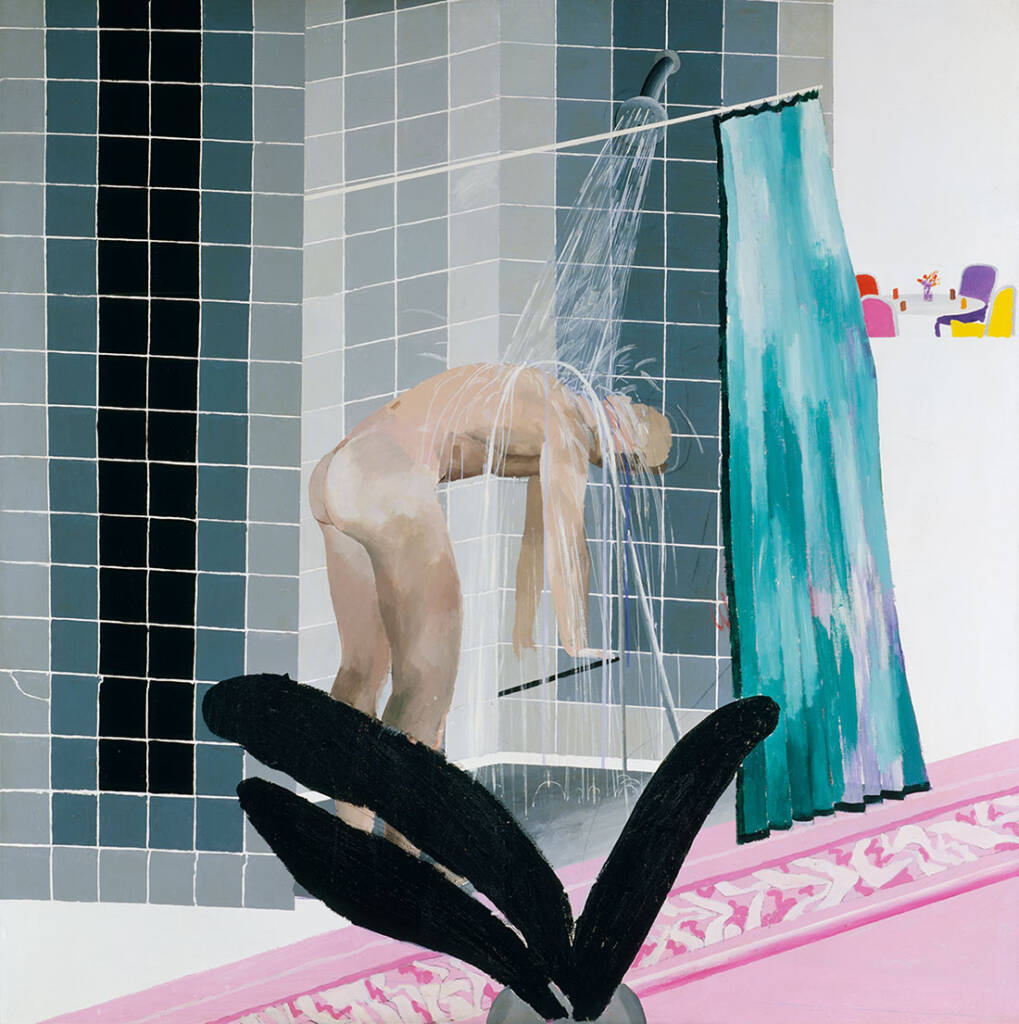
“To me it was full of blond surfers. If you are gay, you like that.”
David Hockney
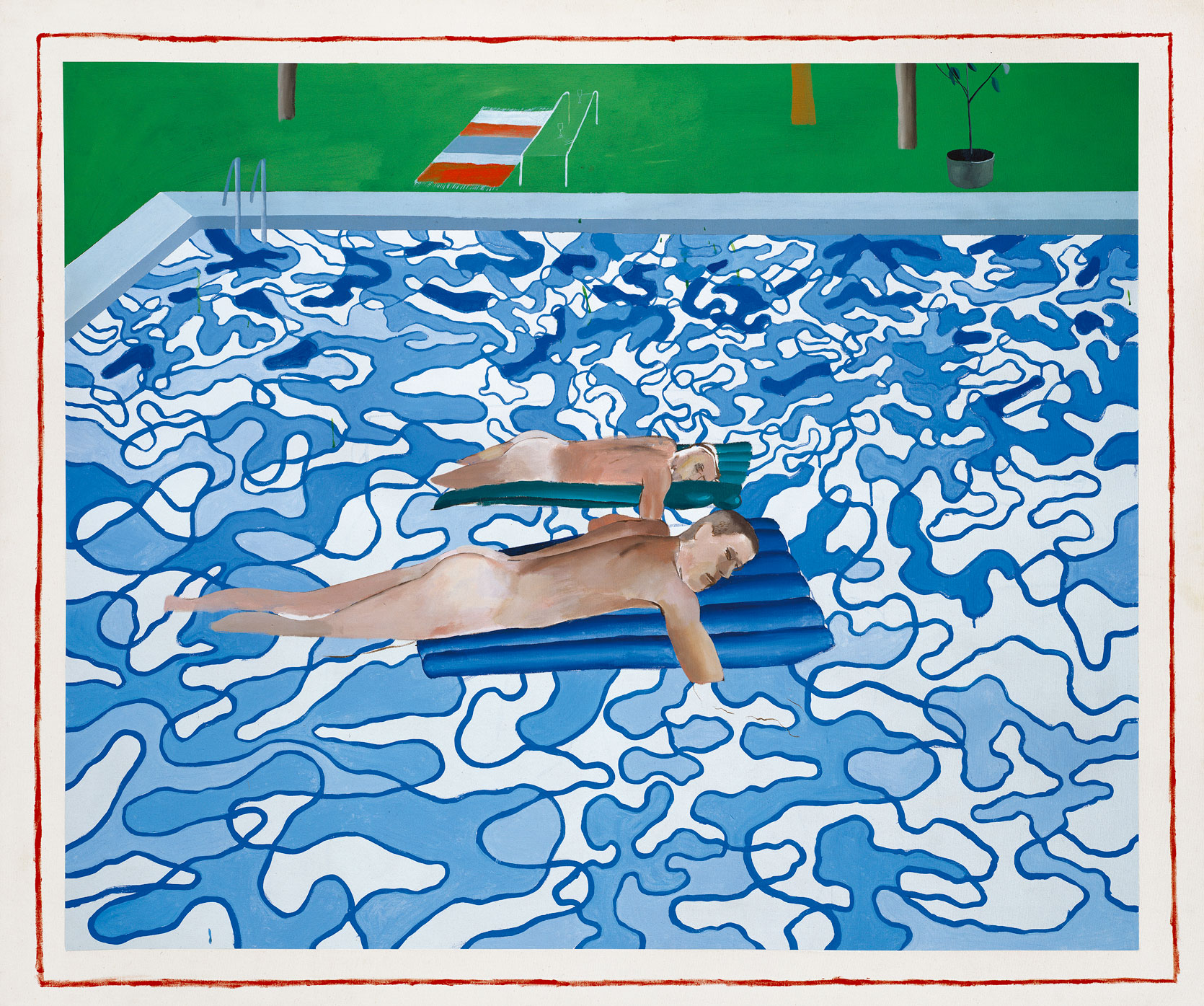
Water
Hockney found it particularly fascinating to depict water. He painted it as a reflecting surface in a pool, bubbling out of a tap, stylised, or as lines or planes.
Hockney certainly did not shy away from the artistic challenge this involved and tried to capture the linear light reflections and mirror-imaging on the surface of water. To heighten the impression of the play of lines on the surface of the water, he even painted the walls and bottom of his own swimming pool.
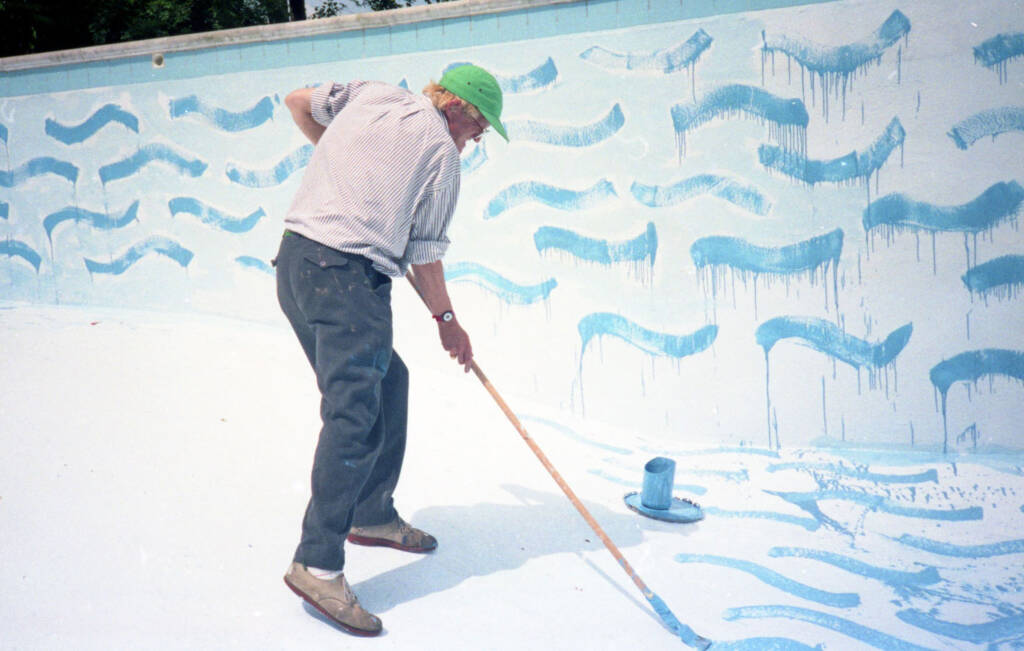
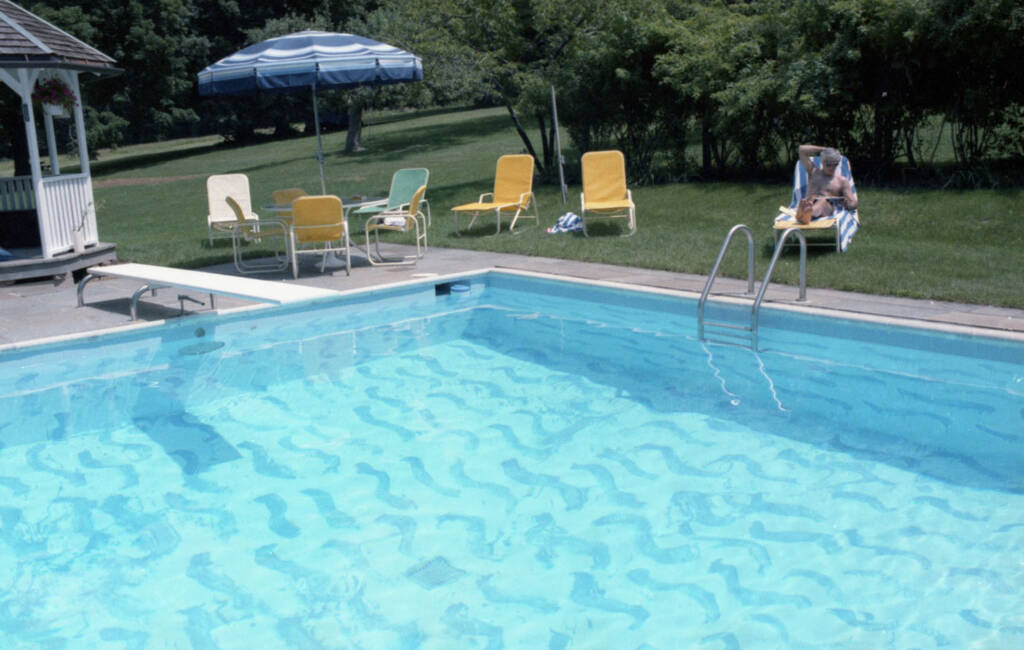
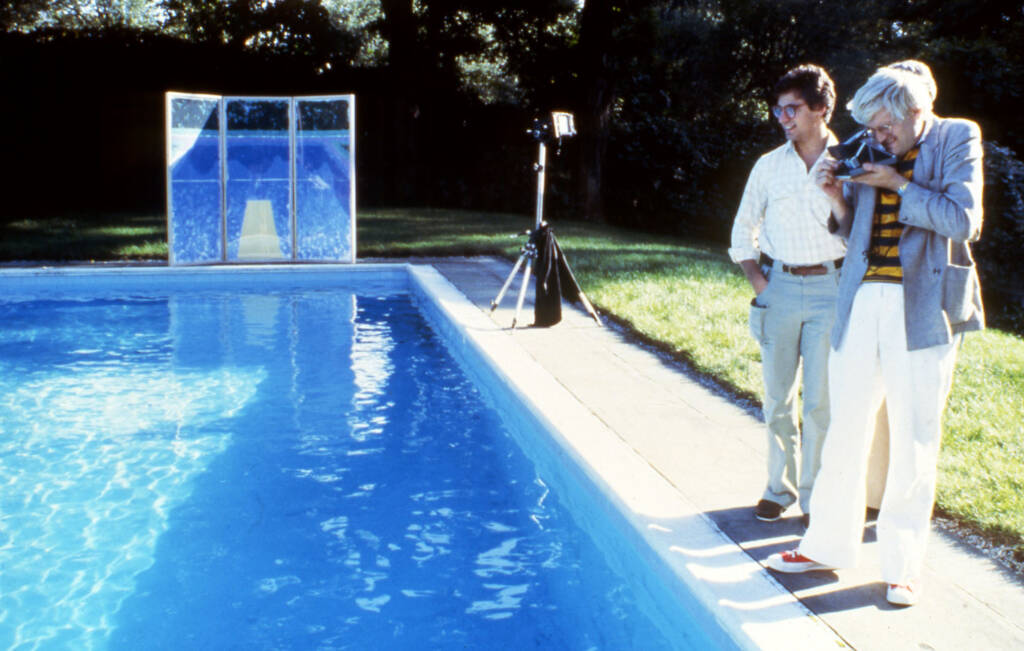
“My pool paintings were about transparency: how do you paint water? It’s an interesting problem. Unlike a pond, a swimming pool reflects the light. Those dancing lines that I used to draw on the pools are really there on the surface of the water. It’s a challenge to draw them.”
David Hockney, 2011
The Great Wave
Hockney’s fascination with water has accompanied him throughout his artistic career. In The Wave, A Lithograph, he emphasises a single wave, making it seem like a mighty sculpture or like a steamboat with a trail of smoke running across the sky from the tip of the wave.
The great wave also has a great model: The Great Wave off Kanagawa by the Japanese artist Katsushika Hokusai. This coloured woodblock print has been an important source of inspiration for numerous western artists.
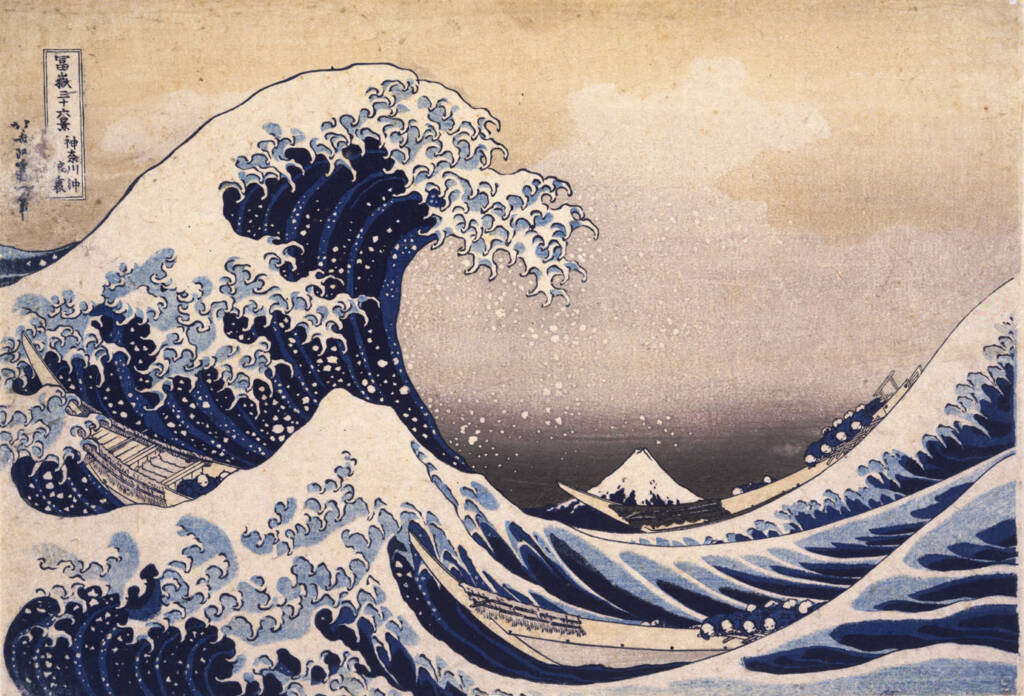
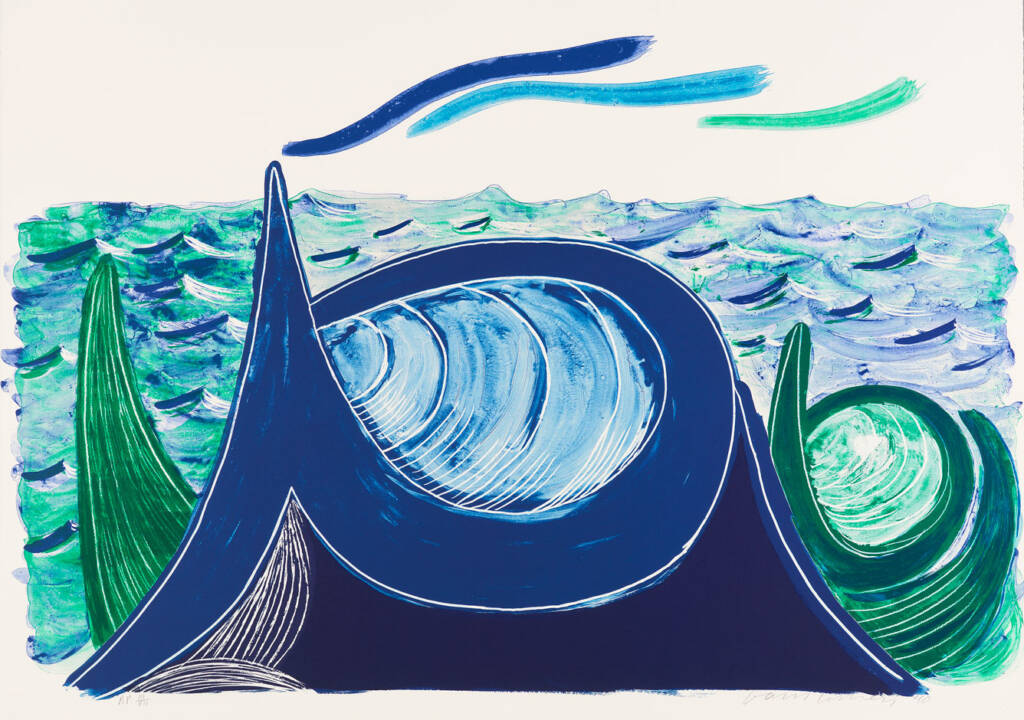
In the Hollywood Hills
David Hockney lived in Los Angeles for several decades. In 1982 he bought a house in the Hollywood Hills near the legendary Mulholland Drive. David Hockney explored the city on long fast car drives, listening to music, preferably by Richard Wagner. Perception is altered by speed and the curving roads: the landscape changes its shape, the image adapts to the feeling of driving. David Hockney painted a bird’s eye view of the road leading through the Nichols Canyon to his house: it winds its way between colourful houses and hills, stopping abruptly just short of picture’s edge. At the same time, the painting is like a map or a view summarising the car journey as an experience.
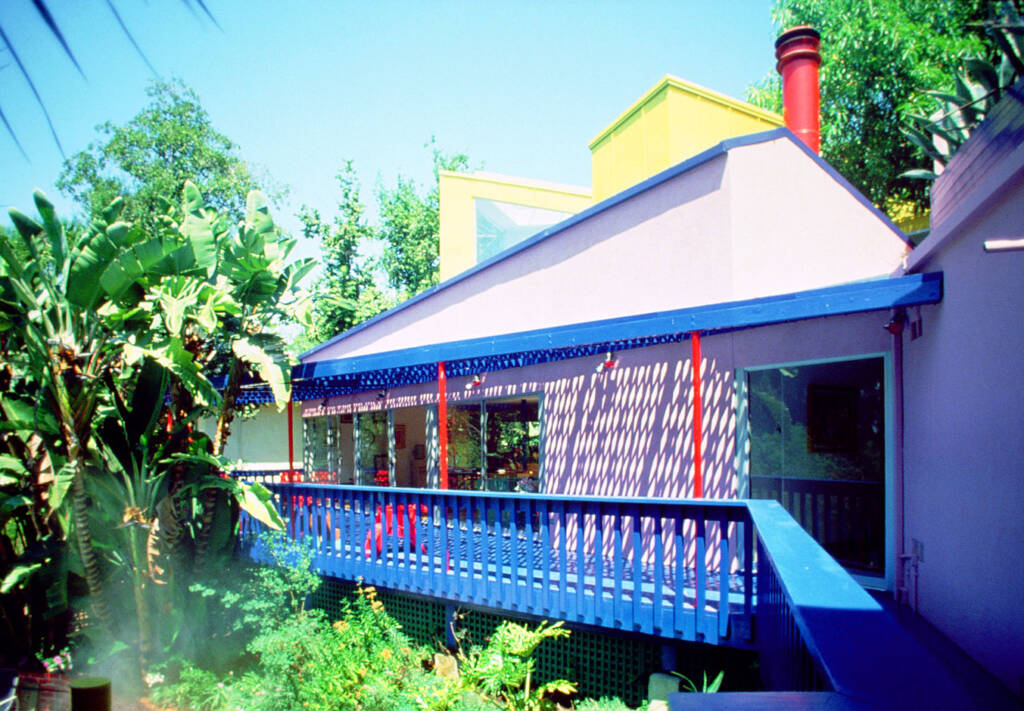
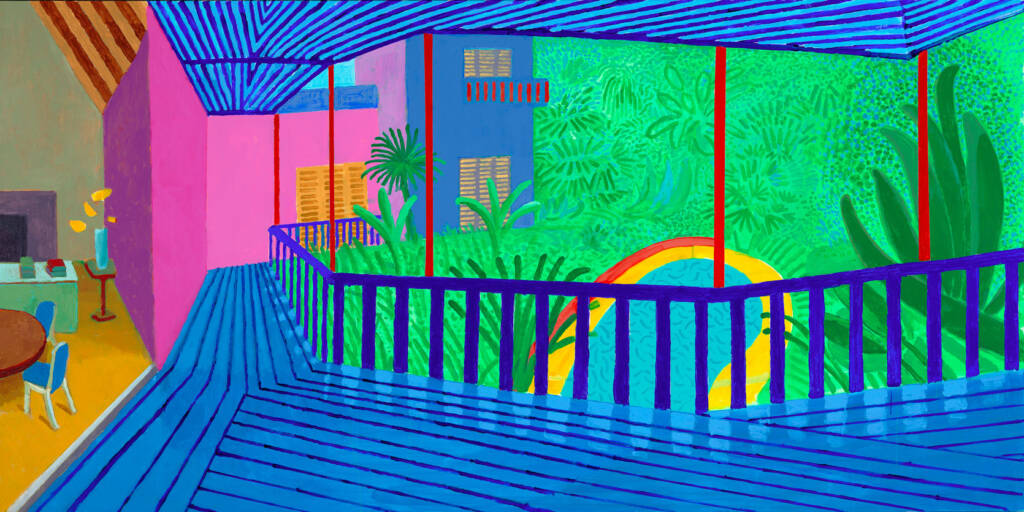
In Search of Hockney’s Hollywood
Younger artists are repeatedly interpreting Hockney’s paintings. The Belgian artist Rinus Van de Velde, for example, created his own version of Hockney’s Nichols Canyon.
The motif corresponds almost exactly to Hockney’s painting. Only the street names are missing, and the picture is painted in black and white. Below the landscape we read: “Tell Me How I get There, David.” Unlike Hockney, who liked to paint outdoors, Rinus Van de Velde prefers to take mental trips in his studio. With his charcoal drawing of Nichols Canyon Van de Velde enters into a fictional dialogue with Hockney: “How do I get there?” is intended less as a request for directions to Hockney’s house and more in a metaphorical sense: how it is possible today to follow in the footsteps of masters like Picasso, Van Goth or even David Hockney?